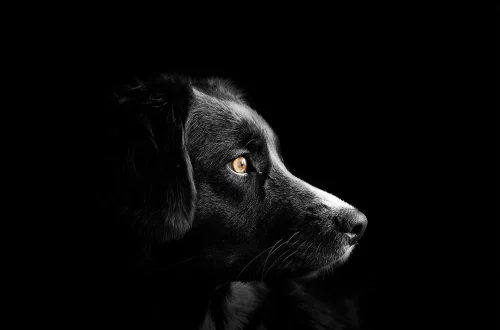
The Hottest Movie Scene That Left Audiences Breathless
The world of cinema has a unique ability to evoke powerful emotions, transporting audiences to different realms and engaging them in stories that linger long after the credits roll. Among the myriad of thrilling moments that films offer, certain scenes stand out, leaving viewers breathless in their wake. These unforgettable sequences often blend stunning visuals, compelling narratives, and masterful performances, creating an experience that captivates and resonates with audiences across generations.
From heart-stopping action sequences to poignant dramatic exchanges, the most impactful movie scenes encapsulate the essence of what it means to be human. They challenge our perceptions, tug at our heartstrings, and often redefine the boundaries of storytelling. The magic of cinema lies in its ability to connect us through shared experiences, and these electrifying moments serve as the pinnacle of that connection. With each flicker of light on the screen, viewers are invited to explore the depths of their emotions, often finding parts of themselves reflected in the characters they watch.
As we delve into the elements that make a movie scene truly unforgettable, we will explore various aspects of filmmaking and storytelling that contribute to these breathtaking moments. The following sections will examine the artistry behind these scenes, the significance of emotional resonance, and the impact of performance and direction. Through this exploration, we aim to celebrate the art of cinema and the extraordinary scenes that leave us breathless.
The Art of Cinematic Storytelling
Cinematic storytelling is an intricate blend of narrative structure, character development, and visual artistry. At its core, a great movie scene encapsulates the essence of the story while pushing the narrative forward. Filmmakers utilize various techniques to create a seamless flow of events that draw viewers into the characters’ journeys.
One of the fundamental aspects of cinematic storytelling is the use of conflict. A scene that introduces or escalates conflict can create tension, leaving audiences on the edge of their seats. Whether it’s a confrontation between characters or an internal struggle, conflict serves as the engine that drives the story. For instance, consider a scene where two protagonists face off, their differing motivations clashing in a moment of high stakes. The tension is palpable, and viewers can’t help but feel the urgency of the moment.
Moreover, character development plays a crucial role in making a scene impactful. When audiences are invested in a character’s journey, every decision they make and every obstacle they encounter becomes significant. This emotional investment is often cultivated through earlier scenes that establish the character’s backstory, desires, and fears. A well-crafted scene, therefore, can serve as a culmination of a character’s growth, providing a powerful payoff for the audience.
Visual storytelling also enhances the impact of a scene. Filmmakers use cinematography, lighting, and editing techniques to evoke specific emotions. For example, a dramatic confrontation might be shot with tight framing and dim lighting to heighten the tension, while a romantic moment could be bathed in soft light and wide angles to create intimacy. These visual cues work in tandem with the narrative to create a holistic experience that resonates with viewers.
In essence, the art of cinematic storytelling lies in its ability to weave together various elements—conflict, character development, and visual aesthetics—to create moments that leave audiences breathless. Each scene becomes a vital thread in the tapestry of the film, contributing to a greater narrative that captivates and enthralls.
The Power of Emotional Resonance
Emotional resonance is a vital component of any unforgettable movie scene. It is what allows audiences to connect with the characters on a deeper level, feeling their joys and sorrows as if they were their own. When a scene evokes genuine emotion, it transcends mere entertainment and becomes a shared experience that lingers in the minds of viewers.
One of the key elements of emotional resonance is authenticity. Audiences can often sense when a moment is forced or contrived. A scene that feels genuine, whether it’s a heart-wrenching farewell or a triumphant victory, resonates more profoundly because it reflects real human experiences. This authenticity is often achieved through nuanced performances by actors who bring their characters to life with depth and vulnerability. A single tear shed in an emotional scene can convey a world of meaning, capturing the essence of the character’s struggle in a way that words often cannot.
Additionally, the use of music and sound design enhances emotional resonance. A poignant score can elevate a scene, guiding the audience’s emotional response. For instance, the crescendo of an orchestral piece during a climactic moment can amplify feelings of joy, sadness, or tension. Sound effects, such as the heartbeat in a quiet moment of reflection, can further immerse viewers in the character’s emotional state. This combination of visuals and audio creates a multi-sensory experience that deepens the connection between the audience and the film.
Another aspect of emotional resonance is relatability. Scenes that depict universal themes—love, loss, sacrifice—tend to resonate more deeply with audiences. When viewers can see themselves in the characters’ struggles, they are more likely to be affected by the scene. This relatability fosters empathy, allowing audiences to step into the shoes of the characters and experience their emotions firsthand.
In conclusion, the power of emotional resonance in film cannot be overstated. It is what transforms a simple moment into a profound experience, leaving audiences breathless and touched long after the scene has ended. When filmmakers successfully tap into the emotions of their audience, they create moments that are not only memorable but also transformative.
The Impact of Direction and Performance
Direction and performance are two critical components that significantly influence the effectiveness of a movie scene. A skilled director has the vision to orchestrate every aspect of a scene, from the actors’ performances to the camera angles and pacing. This vision shapes how the audience perceives the moment and can either elevate or diminish its impact.
A director’s approach to storytelling can vary greatly, with some opting for a more subtle, understated style, while others embrace bold, dramatic choices. For instance, directors like Quentin Tarantino are known for their stylistic flair, often using long takes and sharp dialogue to create tension and excitement. In contrast, directors like Greta Gerwig might focus on intimate character moments, allowing the actors’ performances to shine through in quieter, more reflective scenes.
The collaboration between the director and the actors is essential in crafting unforgettable moments. A great performance can bring depth and authenticity to a scene, captivating the audience and drawing them into the character’s world. Actors who immerse themselves in their roles, embodying the emotional nuances of their characters, can create powerful connections with viewers. The chemistry between actors also plays a crucial role, particularly in scenes that require emotional vulnerability or tension. When two actors genuinely connect on screen, it can elevate the scene from good to unforgettable.
Moreover, the use of blocking and staging in a scene can significantly influence its impact. How actors are positioned in relation to one another, the movement within the frame, and the overall composition can all contribute to the emotional weight of a moment. A well-choreographed scene can create a visual rhythm that enhances the storytelling, guiding the audience’s attention and evoking specific emotions.
Ultimately, the impact of direction and performance on a movie scene is profound. When these elements come together harmoniously, they can create moments that leave audiences breathless, transforming a simple story into a powerful cinematic experience. The collaboration of talented individuals behind and in front of the camera is what brings the magic of film to life, leaving an indelible mark on viewers.
In conclusion, the world of cinema is filled with scenes that capture the imagination and evoke deep emotions. Whether through the art of storytelling, the power of emotional resonance, or the skillful direction and performance, these moments remind us of the profound connection we share with the stories we love. As audiences, we continue to seek out these breathtaking scenes, celebrating the magic of film that leaves us breathless.




